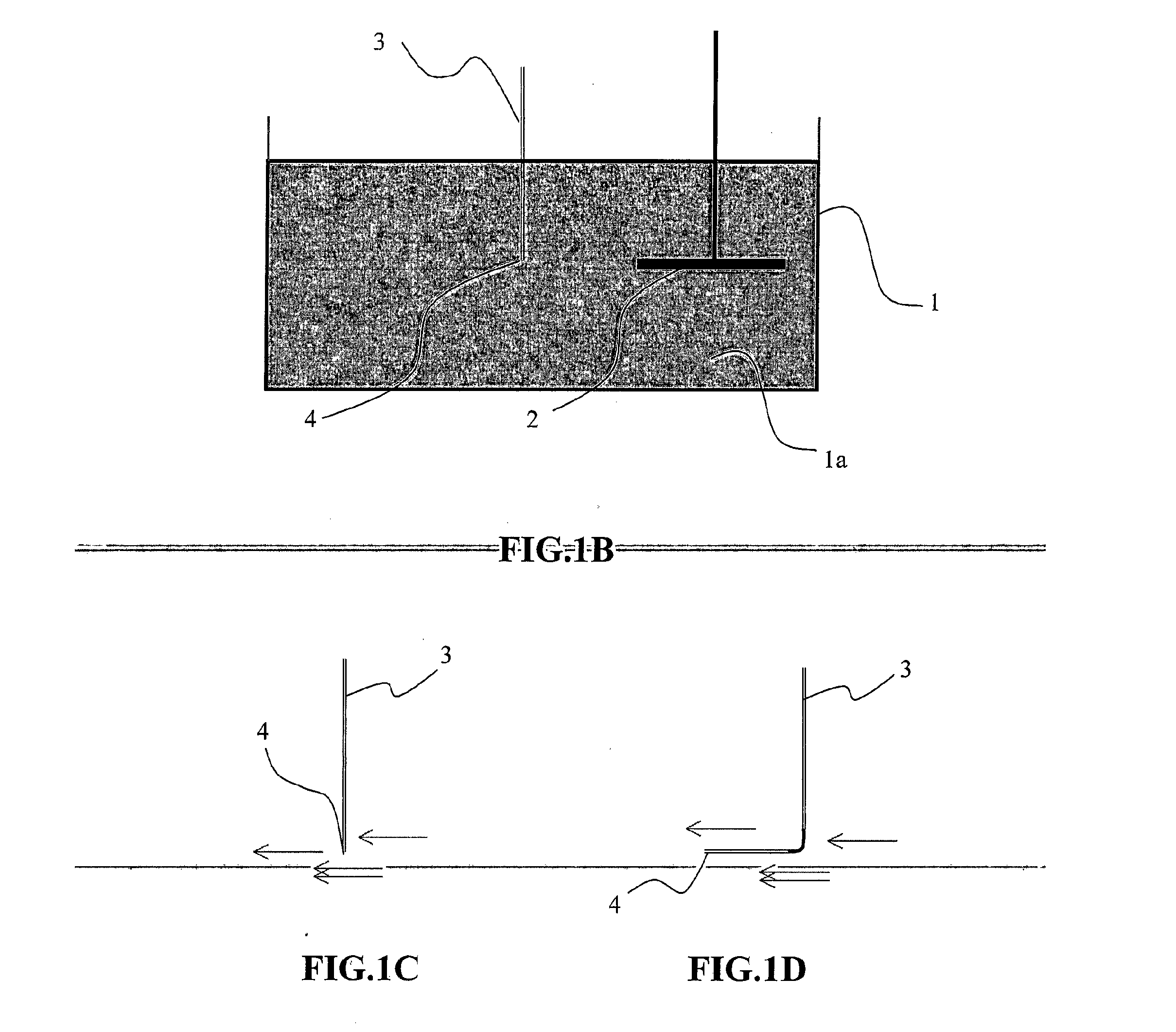Method of Preparation of Polysaccharide Fibres, Wound Covers that Contain Them, Method of Manufacturing of Wound Covers, and Apparatus for Preparation of Polysaccharide Fibres
- Summary
- Abstract
- Description
- Claims
- Application Information
AI Technical Summary
Benefits of technology
Problems solved by technology
Method used
Image
Examples
example 1
[0139]In the air atmosphere, at intense stirring, 6 grams of sodium hyaluronan with molecular weight of 1.7 MDa (determined by the SEC-MALLS method) was dissolved in 94 g of water with adding of 0.51 g NaOH to obtain a homogenous, well flowing, viscous solution suitable for spinning. This solution was spun by the wet method with a nozzle having the diameter of 0.4 mm into the spinning bath comprising propane-2-ol, stirred with an agitator, more specifically with the Heidolph DIAX 900 dispergator at 2500 rpm. The forming microfiber was collected from the “moving (non-stationary) bath” and transferred to the “maturation bath” consisting of propane-2-ol, where the coagulation of the fiber was completed. After 60 minutes, the microfiber was removed from the maturation bath and dried at the temperature of 60° C. The fiber character is shown in FIG. 3. The length of the microfibers obtained by this method is approximately 5-30 mm. This type of fibers is suitable for the construction of ba...
example 2
[0140]In the air atmosphere, at intense stirring, 6 grams of sodium hyaluronan with the molecular weight of 1.7 MDa (determined by the SEC-MALLS method) was dissolved in 94 g of water with adding of 0.51 g NaOH to obtain a homogenous, well flowing, viscous solution suitable for spinning. This solution was spun by the wet method with a nozzle having the diameter of 0.4 mm into the spinning bath comprising propane-2-ol, stirred with the Heidolph DIAX 900 dispergator at 2500 rpm. The forming microfiber was collected from the “moving bath” and transferred to the “maturation bath” consisting of propane-2-ol, where the coagulation of the fiber was completed. After 60 minutes the maturation bath containing the microfibers was poured into the Eta-Ergo knife mixer, where the fibers were shortened. Then the shortened fiber was filtrated off and the obtained filtration cake was compressed to the form of a “paper” sheet, and the produced product was dried at the room temperature (approx. 25° C....
example 3
[0142]In the air atmosphere, at intense stirring, 6 grams of sodium hyaluronan with the molecular weight of 1.7 MDa (determined by the SEC-MALLS method) was dissolved in 94 g of water with adding of 0.51 g NaOH to obtain a homogenous, well flowing, viscous solution suitable for spinning. This solution was spun by the wet method with a nozzle having the diameter of 0.4 mm into the spinning bath comprising propane-2-ol, stirred with the Heidolph DIAX 900 dispergator at 2500 rpm. The forming microfiber was collected from the “moving bath” and transferred to the “maturation bath” consisting of propane-2-ol, where the coagulation of the fiber was completed. After 60 minutes the maturation bath containing the microfibers was poured into the Eta-Ergo knife mixer, where the fibers were shortened. Then the shortened fiber was filtrated off and the filtration cake was dried without compression at 20° C. A voluminous layer of microfibers—a cotton wool showed in FIG. 5—was thereby obtained as a...
PUM
| Property | Measurement | Unit |
|---|---|---|
| Temperature | aaaaa | aaaaa |
| Temperature | aaaaa | aaaaa |
| Temperature | aaaaa | aaaaa |
Abstract
Description
Claims
Application Information
 Login to View More
Login to View More - R&D
- Intellectual Property
- Life Sciences
- Materials
- Tech Scout
- Unparalleled Data Quality
- Higher Quality Content
- 60% Fewer Hallucinations
Browse by: Latest US Patents, China's latest patents, Technical Efficacy Thesaurus, Application Domain, Technology Topic, Popular Technical Reports.
© 2025 PatSnap. All rights reserved.Legal|Privacy policy|Modern Slavery Act Transparency Statement|Sitemap|About US| Contact US: help@patsnap.com



